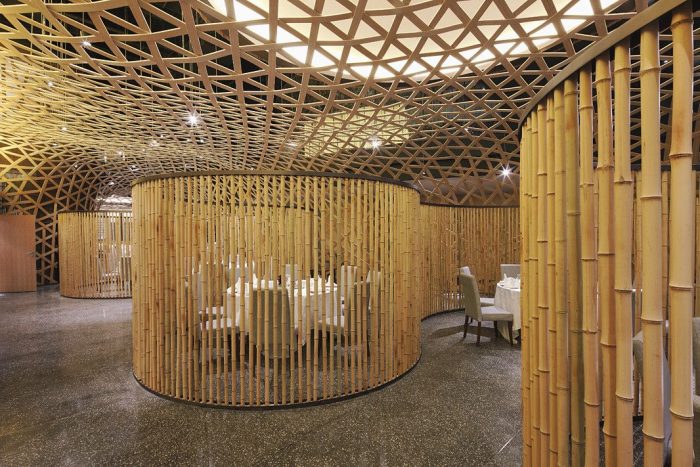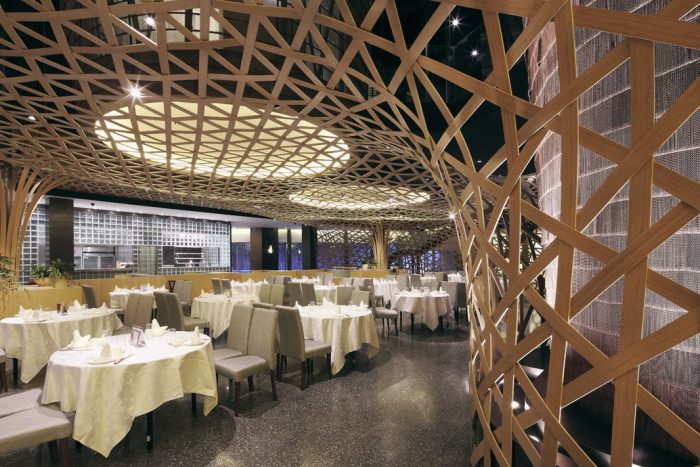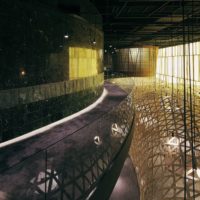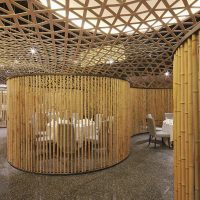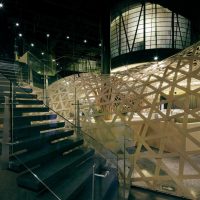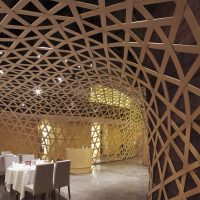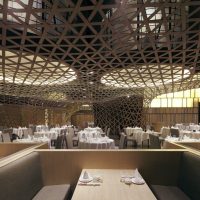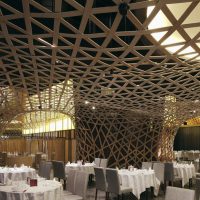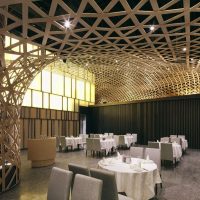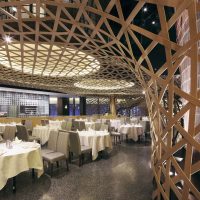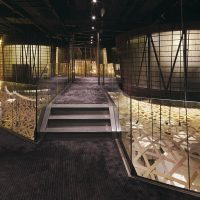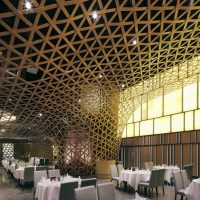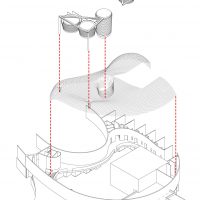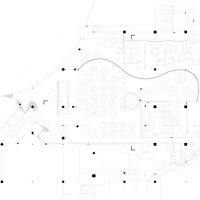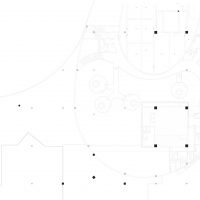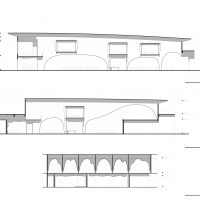Using Bamboo as the main material architects FCJZ responded to the disorganized nature of the original Tang place restaurant. The initial condition was of a main column with several semi-oval blocks.
Their design therefore was to reshape the space through a floor to ceiling connection via bamboo weaves. The interweaved bamboo screen creates a visual connection between the levels through the hollowed-out ceiling created. The main column is also wrapped with backlit bamboo transforming it into a lively focal object.
Right from the entrance, the bamboo-covered walls introduce the customers to the core design material of bamboo. Private rooms on the first floor also designed with bamboo whiles using different characteristics. The rooms above on the south are smaller and feature a special waved ceiling pattern and simple bamboo wall surface, which creates interesting and spacious room features.
All in all the main bamboo themed design according to the architects is to reflect the local cultural climate while seeking spatial effects.
Project: Tang Palace, Hangzhou, China
Location: 6th Floor of MixC, No. 701, Fuchun Road, Jianggan District, Hangzhou, China
Client: HongKong Tang Palace Food&Beverage Group Co., LTD.
Area: 2460 ㎡
Materials: Bamboo, Composite Panel, Rubbed Concrete
Designer: Atelier Feichang Jianzhu
Principal Designer: Chang Yung Ho
Project Architect: Lin Yihsuan
Design Team: Yu Yue, Wu Xia, Suiming Wang
Construction Period: February 2010 – July 2010
General Contractor: Shenzhen C.S.C. Decoration Design Engineering CO., LTD Beijing Branch
Finish material: Wall – bamboo (1f), marble (2f)/ Flooring – terrazzo (1f), carpet (2f) / Ceiling – bamboo net(1f), painting(2f)
- photography by © SHU He
- photography by © SHU He
- photography by © SHU He
- photography by © SHU He
- photography by © SHU He
- photography by © SHU He
- photography by © SHU He
- photography by © SHU He
- photography by © SHU He
- photography by © SHU He
- axo
- Plan
- plan
- elevation
Courtesy of FCJZ


